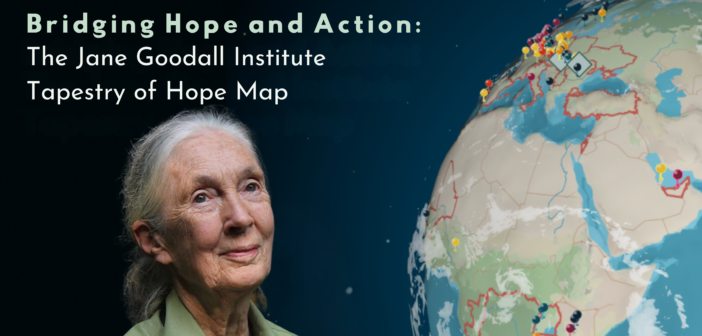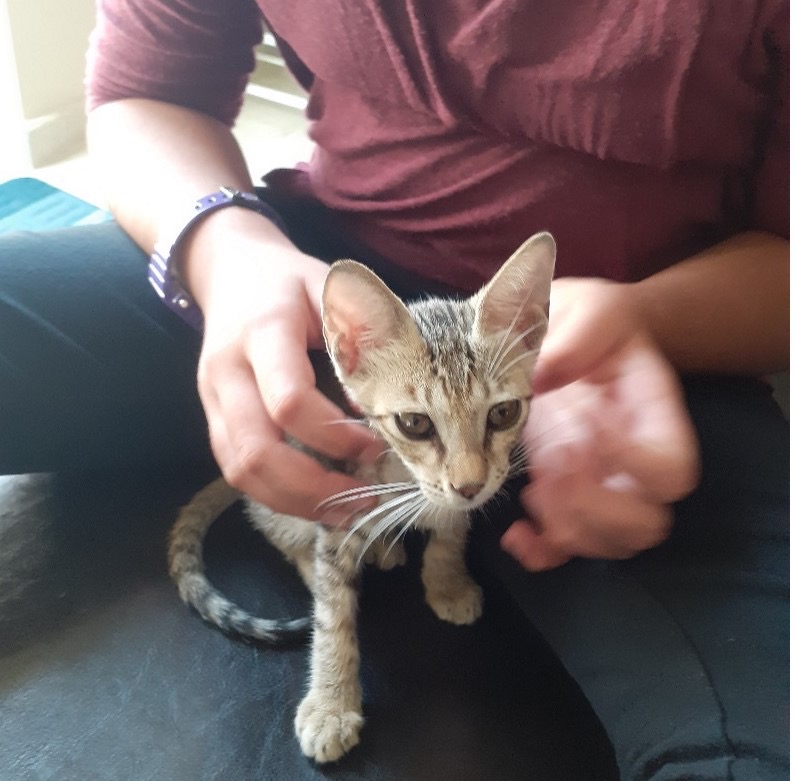Add your own story to Jane Goodall Institute’s Tapestry of Hope
There’s no doubt about it—our planet is in crisis. From climate change to biodiversity loss, there’s a lot to be concerned about. But that’s not the whole story. If you only look at the negative headlines, you’ll miss inspiring reasons for hope.
Community-led initiatives are making a difference every day, all around the world. Young people are taking action in their schools and neighborhoods. Scientists are developing innovative technologies to build a sustainable future. Nature is proving that, with a little help and protection, it can regenerate. There are so many stories to inspire positive action. That’s why we’ve reimagined the Tapestry of Hope, an interactive mapping tool that shines a light on individual stories of positive change for a healthy planet.
First launched in 2015, this improved version now features the ability for people around the world to submit their own stories. It’s designed to be continuously updated as part of a broader JGI Science & Knowledge platform funded by Apple. Developed and maintained by the Conservation Science team at the Jane Goodall Institute (JGI) USA in partnership with JGI Global and JGI chapters and offices across the world, the Tapestry of Hope is a digital 3D interactive globe powered by Esri’s geospatial technologies that virtually connects communities to share their experiences and the positive changes they are making.
And these stories are just the beginning! Explore more inspirational stories, and add your own:
Why did we create this tool? At the Jane Goodall Institute, we believe that hope is a powerful catalyst for change. Hope inspires resilience, determination, and above all, action. We unveiled this important new resource during an 🔗 event in the International Union for Conservation of Nature (IUCN) pavilion at COP28 in Dubai featuring the video message from Dr. Jane Goodall introducing the map above. In it she shares:
“I’ve seen the devastation that humans can bring to the environment. But I’ve also been inspired by the great stories of the people who care about their community and the environment.”
— Dr. Jane Goodall, DBE, Founder of the Jane Goodall Institute and UN Messenger of Peace
The Tapestry of Hope map illustrates our integrated approach to conservation and sustainable development. Local communities that rely on nature for their livelihoods are being hit hard by ecosystem degradation, but they also hold the key to solving these problems. The Jane Goodall Institute (JGI) works with these communities using our Tacare approach to community-led conservation and our Roots & Shoots global youth movement to address the threats to people, other animals, and the environment. The health of each is inextricably linked to the rest. The Tapestry of Hope Map is a visualization of this holistic model.
The Tapestry of Hope map is also part of our Conservation Science vision that supports data-driven stories to help connect minds with compassionate hearts. At the Jane Goodall Institute, science is part of our DNA. We use science along with indigenous knowledge and other ways of knowing with the local communities to understand how biodiversity, ecosystems and livelihoods are interconnected and facilitate locally-owned nature-based solutions. That’s why we support interdisciplinary, participatory and open science—collaborating, sharing, and generating knowledge in a grassroots way. The Tapestry of Hope map enables individuals and communities to see how their impact is part of a bigger picture, a worldwide movement to make the planet healthier and kinder for future generations. The more stories people add, the more data and insight we’ll have into our collective global conservation efforts.
In the face of daunting environmental and social challenges, embracing and reflecting on the reasons for hope is essential. Together, through individual and collective efforts guided by science and innovative technologies, we can restore biodiversity and protect the planet for people and other animals alike while bridging hope and action.










